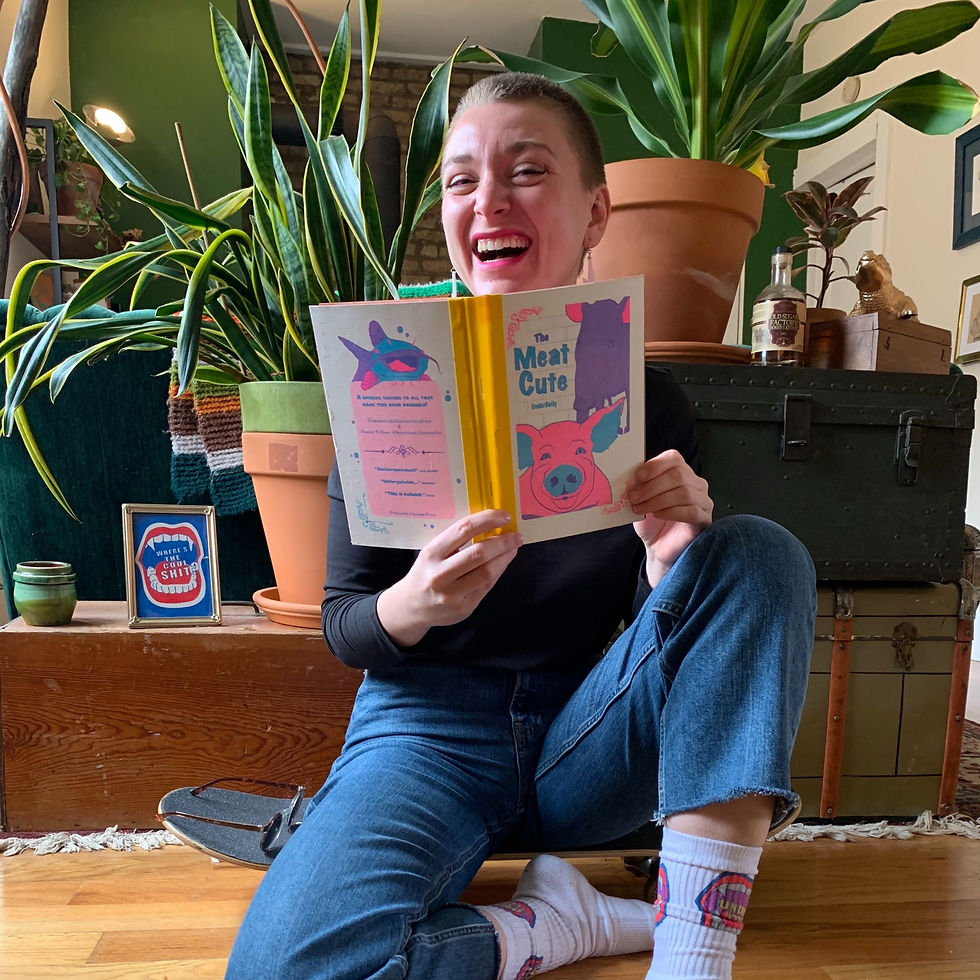What Designers Can Learn from Octopuses
- Olivia Wisden
- May 18, 2023
- 3 min read
As part of our marketing challenge, we spent some time reimagining our newsletter. And part of that reimagination was looking at our own brand values at UnderBelly and seeing how we can start to bring more of ourselves to everything we do. Including our newsletter. A core company value we have is continued education and a core design value we have is design should be fun. And this inspired our new newsletter series, Let’s Get Niche.
In each segment of Let’s Get Niche, we dive into a random topic and see how it ties back to design, business, or branding. Our first segment was Newsletters. Mostly because we thought it was funny to have a Newsletter about newsletters during our newsletter marketing challenge.
So naturally, the 2nd segment of Let’s Get Niche had to be about Octopuses.
Why? I couldn’t tell you other than I think they are super weird creatures and I thought it would be a fun challenge to tie them back to design. But the joke’s on me because, in fact, it wasn’t hard at all.
One of the most amazing elements of octopuses is their ability to literally change their skin to blend in with their surroundings or to mimic a predator. So this gets us to the first thing octopuses can teach us.
Adaptability is survival.
As designers, we need to be able to change directions and make adjustments quickly as we get feedback. Getting stuck to one idea or one direction can be dire for a designer. Our client's needs and styles are as vast as the number of projects we work on. So being able to adapt to a new visual direction or idea is key.
Octopuses are believed to be the most intelligent of the invertebrates, meaning they have no bones, no skeletons. As long as an octopus can fit their eye through a hole, it can fit its whole body through. This brings us to tip number two from our cephalopod friends.
Flexibility is key.
Often times when we’ve gotten frustrated with a project, it’s because it wasn’t fitting into our systems and processes perfectly. We created flows and timelines that made our job easier but also because they helped us to feel more “official”. Imposter syndrome is real. What we’ve learned over the past year or so is that these systems and processes are fabulous but they should be guidelines, not the ultimate rules. Offering flexibility to our clients, whether that’s through the means of communication we offer, the stages of revisions, or updating timelines as needed, it makes the process better for everyone. The key is strong communication and setting expectations. As long as we have those in place, we can make it work.
Finally, through my research for this month’s newsletter, I learned that octopuses are able to change their skin color and texture so quickly because they don’t just use their brains to take in their environment but their whole body. Their tentacles, their eyes, and their skin are all receiving information that they then use to camouflage themselves. Additionally, this process can be both voluntary or involuntary meaning they can both control it or it can happen automatically.
How does this relate to us as designers?
Design inspiration is both voluntary and involuntary.
As designers, we use all of our senses to take in the world to use as inspiration. Sometimes we know exactly where an idea came from and what inspired it. We seek out this inspiration in food, competitors, architecture, in nature, in art. But also sometimes an idea just happens and we don’t know where it came from and the meaning reveals itself later. We are constantly taking in information, absorbing context and ideas both consciously and unconsciously. This doesn’t detract from the design just as an octopus not knowing why it’s orange doesn’t make it any less amazing. By recognizing and embracing this we can reinforce the voluntary and involuntary inspiration through our processes and continued learning.
Here’s to continued learning and having fun in both design and business. Because you really don’t know where you’re next inspiration is going to come fun.
****
Interested in chatting more about octopuses or design? Schedule a Discovery Call or contact us at hello@underbelly.io

About The Author
Olivia Wisden is the Founder + CEO of UnderBelly Creative. She has worked with dozens of brands over the years ranging from city initiatives to product launches and beyond. When she’s not fan-girling over the design team’s illustrations she can probably be found reading a novel or attending a boxing class.




Comments